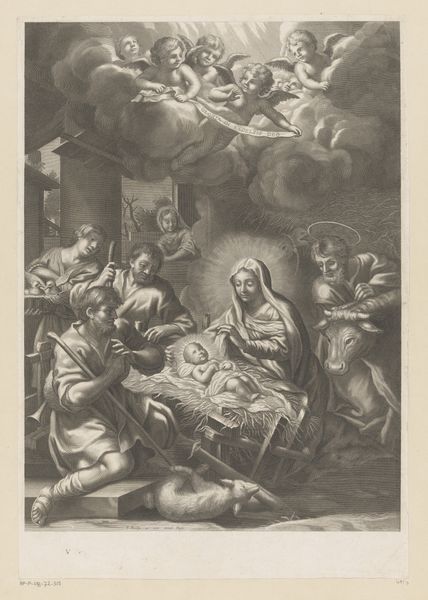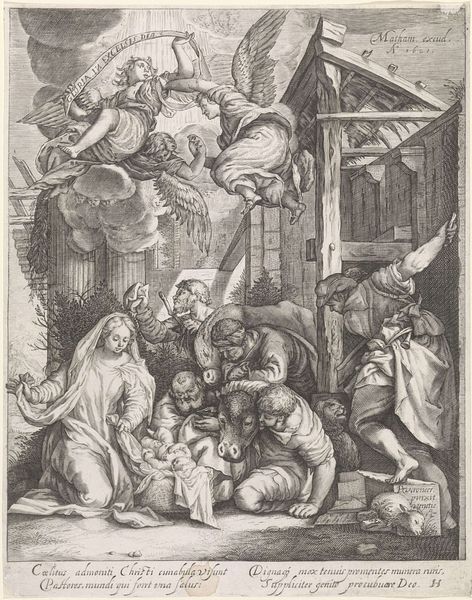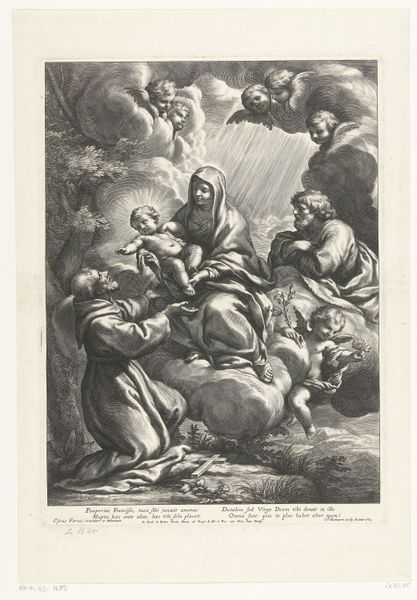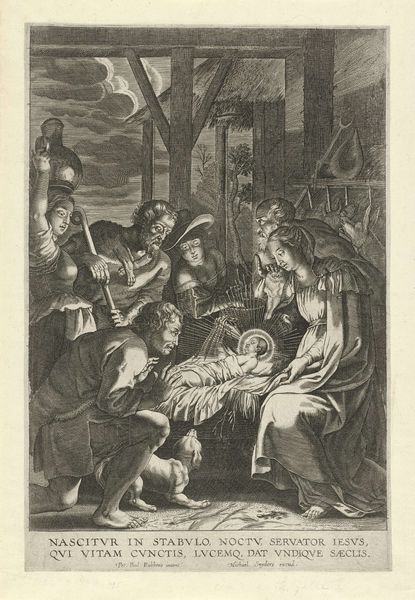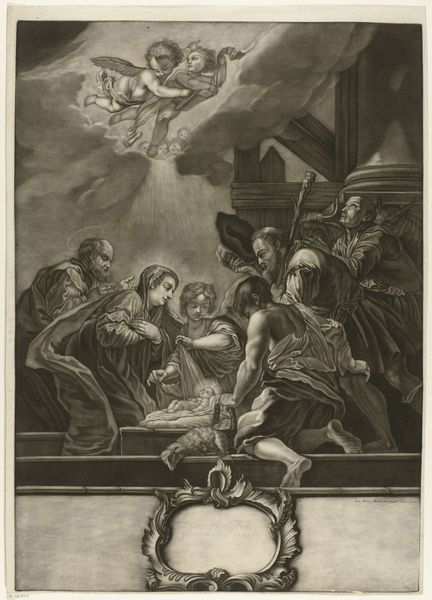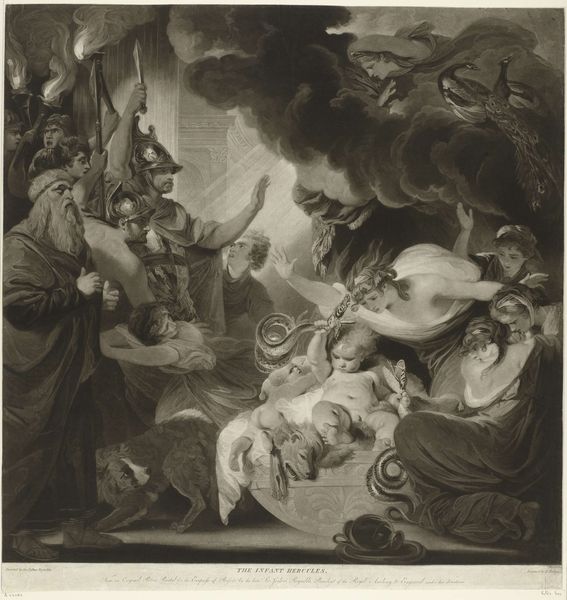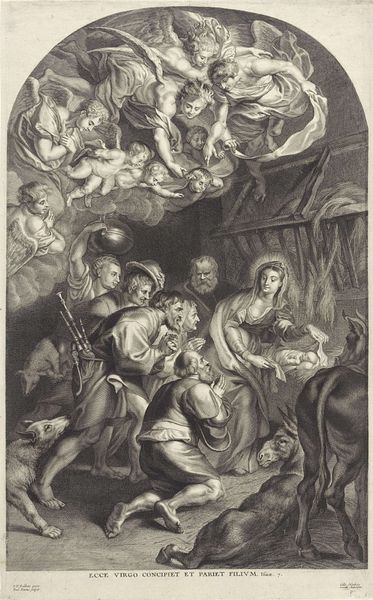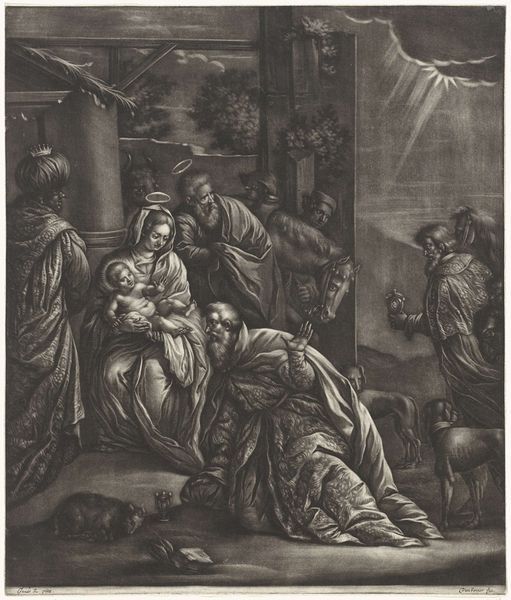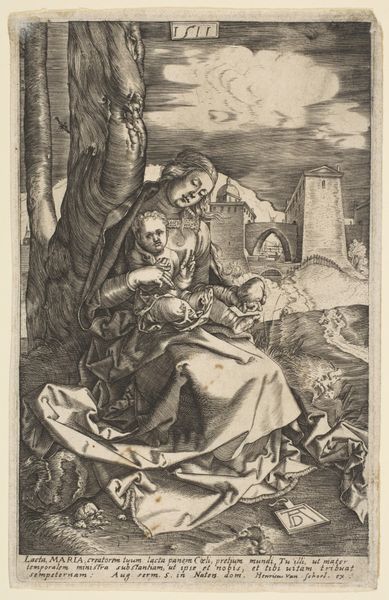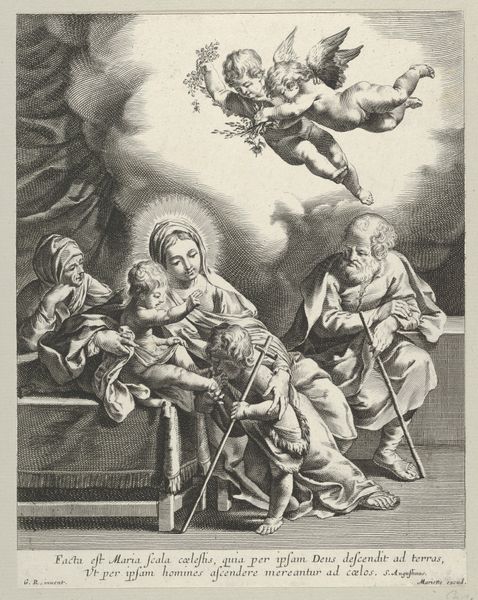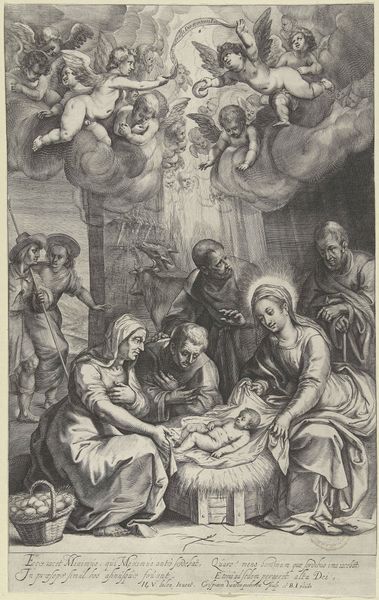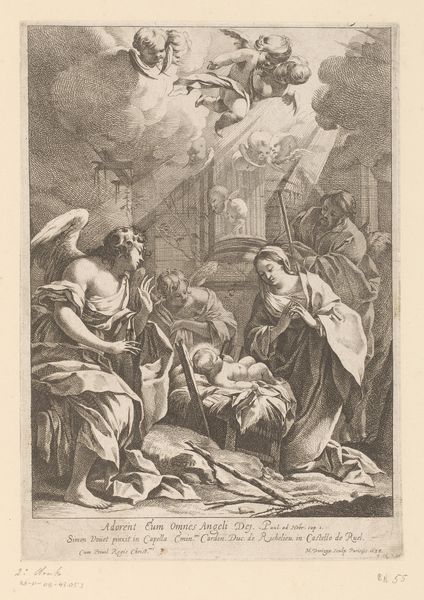
print, engraving
#
baroque
# print
#
old engraving style
#
figuration
#
history-painting
#
engraving
Dimensions: height 380 mm, width 250 mm
Copyright: Rijks Museum: Open Domain
Curator: This engraving, dating somewhere between 1633 and 1692, is entitled "Adoration of the Shepherds." It's the work of Cornelis Bloemaert, currently held at the Rijksmuseum. Editor: The density of detail immediately strikes me; it’s almost overwhelmingly ornate for a print. Curator: Yes, there’s so much packed into one composition. Observe how the angelic choir occupies the upper register, contrasted with the earthly scene of adoration below, mirroring heaven and earth united. Editor: The material labor is really considerable here. The precise and fine cross-hatching of the engraving, rendering a range of light and shadow – that level of craft deserves recognition. I imagine the many hours involved. Curator: And consider the figures themselves, illuminated by the divine light emanating from the Christ child. Each character’s expression – the shepherds' awe, Mary’s tender regard – conveys profound emotional and spiritual weight. This reflects a strong emphasis on symbolism and allegorical representation, a core tenet of Baroque art. Editor: I'm intrigued by the depiction of the shepherds as well – their garments, their tools. It’s not just an idealized scene. These are clearly working-class individuals. What was Bloemaert’s relationship to laboring culture during this period? I'm thinking, here are the end products, where does one contextualize all the production of art in that period? Curator: The visual symbolism, embedded with theological meaning, reveals much. Consider, too, the role that this kind of readily reproducible image had in spreading religious ideology and informing cultural memory. Editor: The accessibility of prints facilitated the dispersal of images beyond the elite circles, affecting the consumption of religious art among a wider population, though Bloemaert does still signal to some form of higher status due to the artistic quality. Curator: Indeed. This print provides rich insights into the intertwining of art, belief, and culture during the Baroque era. It makes the religious experience tangible through symbolic representation. Editor: For me, reflecting on the print prompts deeper considerations of labour conditions, trade and dissemination practices during Bloemaert’s lifetime and the broader role of image production, not just as vehicles of cultural meaning, but tangible objects circulated within networks of economy and exchange.
Comments
No comments
Be the first to comment and join the conversation on the ultimate creative platform.
